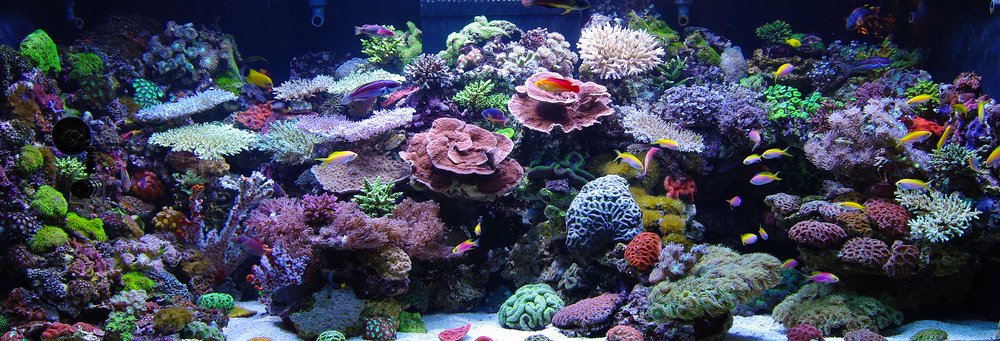By Neil Thompson

1. High quality lighting. Try to ensure you have excellent quality LED clusters which include white / blue / royal blue / ultraviolet / a little red and a little green. This spectrum should replicate what these corals receive in the wild.
2. Good water circulation. You need at least to circulate your tanks volume up to ten times an hour via your sump. extra circulation may be required internally to stop any dead spots around your rock structures. Most return pumps today are DC pumps allowing you to programme different flow patterns to simulate tidal flows.
3. Use a protein skimmer. There are many very reasonably priced skimmers out there but check the sizing as these are quite large so make sure they will fit inside your cabinet.
4. Salt. A good salt has all buffer elements Ca Mg and KH in kilter. One being elevated as a gimmick or a sales ploy can affect your coral’s ability to absorb the other elements.
5. Sump size. Make sure the sump is of a decent volume as some aquariums can lose up to 20L a day leaving some sumps needing topping up daily.
6. Test kits. This to me is vital as in the first stages of your aquarium’s life the parameters of elements like Calcium Ca, Magnesium Mg and Alkalinity KH can fluctuate massively on a day-to-day basis. Most shops offer testing for the consumer, but I believe if you test yourself you pick up much more of what does or does not affect the chemistry of your aquarium. Test every day for the first 6 months, then drop to weekly testing thereafter.

To start creating a reef aquarium, I prefer to put a small layer of coral sand 2-4mm this has 2 main advantages, firstly it hides the glass bottom which doesn’t look overly realistic and secondly, it stops fish being able to see their reflection which can stress them a little. From there you would start to create your structure where your corals would sit on. Today we have many putties and glues to help your create cliffs overhangs caves etc. these also can be used to secure your corals in some precarious positions.”
The introduction of putties and glues into the hobby makes the construction process highly creative. These are non-toxic and can secure corals to egg crate structures or to one another to build the reef. When choosing your coral selection, I personally prefer to use a coral dip before placing it into position, this just ensures there are no bacterial issues or hidden parasites lurking to cause issues with your tank, it’s exceedingly difficult to deal with once in the aquarium. With regular water changes which will refresh some of the lesser chemical elements that either to hard or impossible to test for plus adding your buffer elements Calcium, Magnesium and KH the latter can be done manually or by dosing machine, which will ensure your aquarium stays in peak condition.
Understanding your tank mates’ requirements is crucial to success here. Just like reptiles, corals require magnesium to effectively absorb calcium. Therefore, always follow the MAC process when adding buffer elements. This means Magnesium then alkaline then calcium. Once the levels are consistent and healthy, supporting a healthy ecosystem is quite straightforward. Maintenance boils down to feeding your corals and fish, water changes 10% per week and skimmer cup cleaning. Cleaning of your mechanical filtration which is either filter socks or sponges or floss kept in the first chamber of your sump where water passes through before returning to the aquarium. Lots of reef keepers also use their sumps as an added area for biological media to enhance the growth of beneficial bacteria, many medias are available please ask your retail expert for advice.